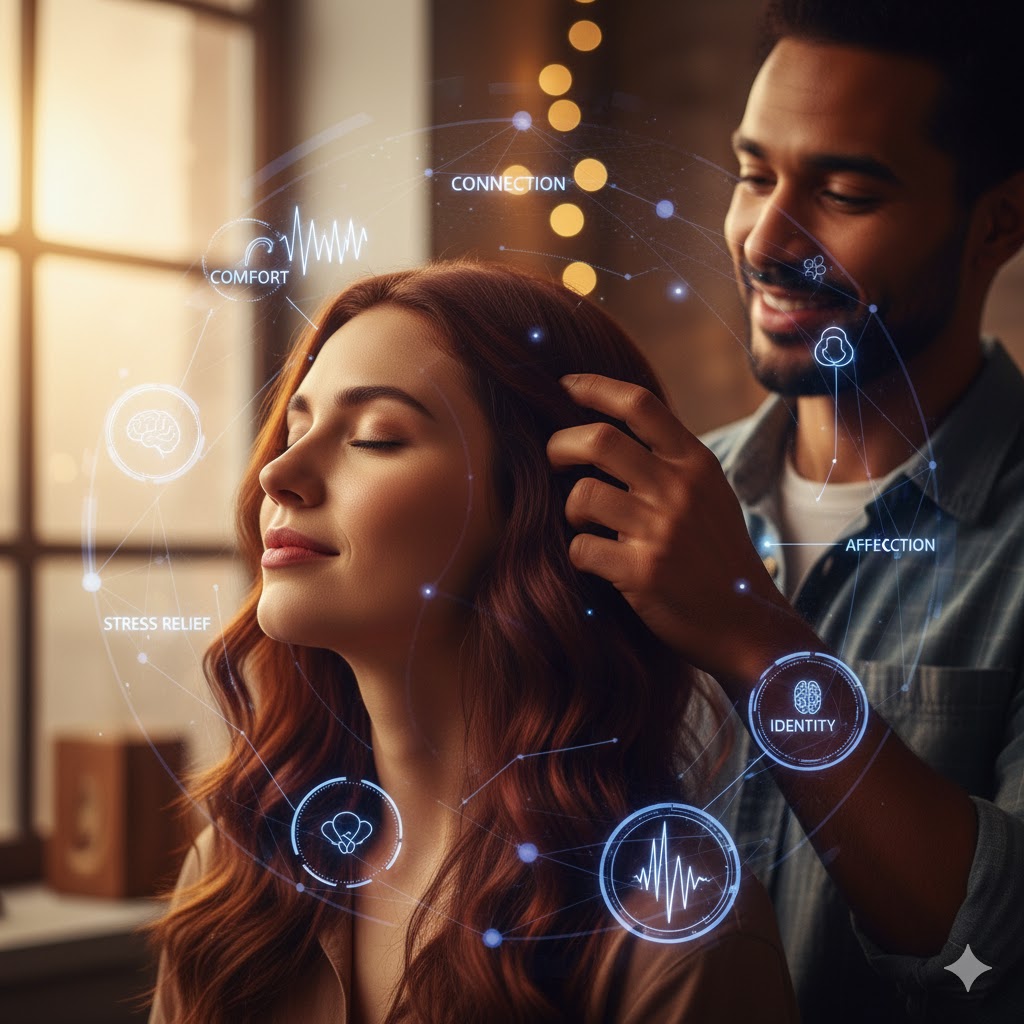Hair loss is often framed in biological or cosmetic terms—hormones, genetics, aging, and styling damage. But there’s another side to the story, one that’s quieter, more personal, and profoundly human: touch.
The feel of your own hair—between your fingers, against your shoulders, on your pillow—is part of your sensory identity. It’s something most people rarely think about… until it begins to change. At ZMD Hair, we understand that hair loss is not just about appearance—it’s about the emotional and psychological memory stored in every strand.
In this blog, we explore the connection between tactile memory, self-image, and the emotional experience of hair loss—and how modern hair restoration can help not only revive follicles but rebuild the deeper feeling of wholeness.
What Is Tactile Memory?
Tactile memory refers to the brain’s ability to store and recall sensations related to touch. Just like you can remember the feel of velvet, sandpaper, or your favorite sweater, you can also remember the texture, density, and motion of your hair.
This memory is not just stored in the fingers. It’s connected to body awareness, confidence, and emotional self-perception. Hair is one of the few parts of the body we touch daily, both intentionally and unconsciously:
- Running fingers through it while thinking
- Adjusting it during conversation
- Feeling it brush the neck or forehead in wind
- Washing or drying it after a shower
Each of these actions reinforces a sensory identity that says: This is me.
How Hair Loss Disrupts Sensory Identity
When hair begins to thin, shed, or disappear altogether, there is more than visual change—there is a disruption in tactile consistency. For many people, this dissonance between how hair used to feel and how it feels now can lead to a profound sense of disconnect.
1. Phantom Sensations
Much like how amputees sometimes experience phantom limb sensations, individuals who’ve lost a significant amount of hair may still expect to feel their hair where it no longer exists. This gap between memory and current sensation can be unsettling, especially during sleep, showering, or emotional moments.
2. Loss of Comfort Habits
Touching or playing with hair is a common self-soothing behavior. During times of anxiety, people often twirl their hair, smooth it down, or tuck it behind their ear—subtle actions that reduce tension. When hair is no longer there, these habits are broken, often increasing stress rather than relieving it.
3. Shift in Self-Perception
Tactile memory plays a key role in how we perceive ourselves—both consciously and subconsciously. Changes in scalp texture, patchiness, or lack of density can create a sensory unfamiliarity that affects confidence, comfort in public, or even intimacy with partners.
The Science of Touch and Self-Image
Touch is one of the earliest senses we develop, and it plays a role in nearly every social and emotional function. When it comes to hair, touch communicates:
- Vitality (hair feels thick and strong)
- Youthfulness (hair has bounce, movement, and fullness)
- Identity (styles, rituals, and cultural expression)
When these elements are disrupted, self-image can suffer—even when others don’t notice the change. That’s because the perception of hair is not just about what we see in the mirror, but what we feel in our daily routines.
How Hair Restoration Revives More Than Just Hair
Hair restoration isn’t simply a visual upgrade—it’s a tactile restoration. Whether through FUE hair transplantation, PRP therapy, or low-level laser therapy, restoring hair can also restore:
- The familiar feeling of hair beneath the hand
- Sensory confidence in touch-based experiences
- Emotional relief from tactile dissonance
- Personal rituals like brushing, styling, or self-soothing through touch
At ZMD Hair, we see it all the time: a patient begins treatment because they miss the look of their hair. But what they often say after restoration is, “I finally feel like myself again.” That feeling is tied to tactile memory more than we might think.
The Role of the Scalp in Touch Memory
It’s important to remember that the scalp is a richly innervated surface. With over 2,000 nerve endings per square inch, the scalp is one of the most touch-sensitive parts of the body. As hair thins, this exposure can lead to:
- Heightened sensitivity to cold or heat
- Greater awareness of scalp texture irregularities
- A changed experience when washing or styling
Part of our approach at ZMD Hair includes scalp health restoration, not just hair density. Ensuring the scalp’s barrier function, vascularity, and microbiome are balanced contributes to a more natural tactile experience.
Emotional Wellness Through Sensory Restoration
Hair loss doesn’t always cause emotional distress—but when it does, it’s often tied to lost rituals, sensory dissonance, or sudden change. Restoring a patient’s hair can help them:
- Regain routines (combing, brushing, conditioning)
- Restore body confidence
- Experience tactile continuity between past and present
- Improve relaxation and sensory grounding
In patients who experience anxiety or stress related to hair loss, we often observe a return of peace-of-mind as restoration progresses—not just because of what they see, but because of what they feel returning.
Sensory Restoration at ZMD Hair
We take a sensory-aware approach to hair restoration, focusing on both the cosmetic and emotional impact of hair loss. Our treatment process is designed to restore your sense of you:
- Comprehensive scalp evaluation to understand the sensory condition
- Minimally invasive procedures with tactile outcomes in mind
- Post-treatment care focused on comfort, touch, and sensory reintegration
- Ongoing support to address emotional recovery during restoration
Whether it’s the feel of your hair under a comb, or the way it moves in the wind, our goal is to bring you back into alignment with your tactile memory of self.
Conclusion:
Hair loss changes more than your appearance—it can change your relationship with touch, memory, and self-image. The absence of familiar sensations can trigger emotional distance, stress, or even grief. But the good news is, you’re not alone—and it’s not permanent.
At ZMD Hair, we believe in restoring more than what’s visible. We restore the feeling of you. Through advanced hair restoration techniques and a human-centered approach, we help you reclaim not just your look—but your identity, confidence, and touch.
📞 Ready to feel like yourself again?
Visit ZMDHair.com or call us today to schedule your private consultation.




